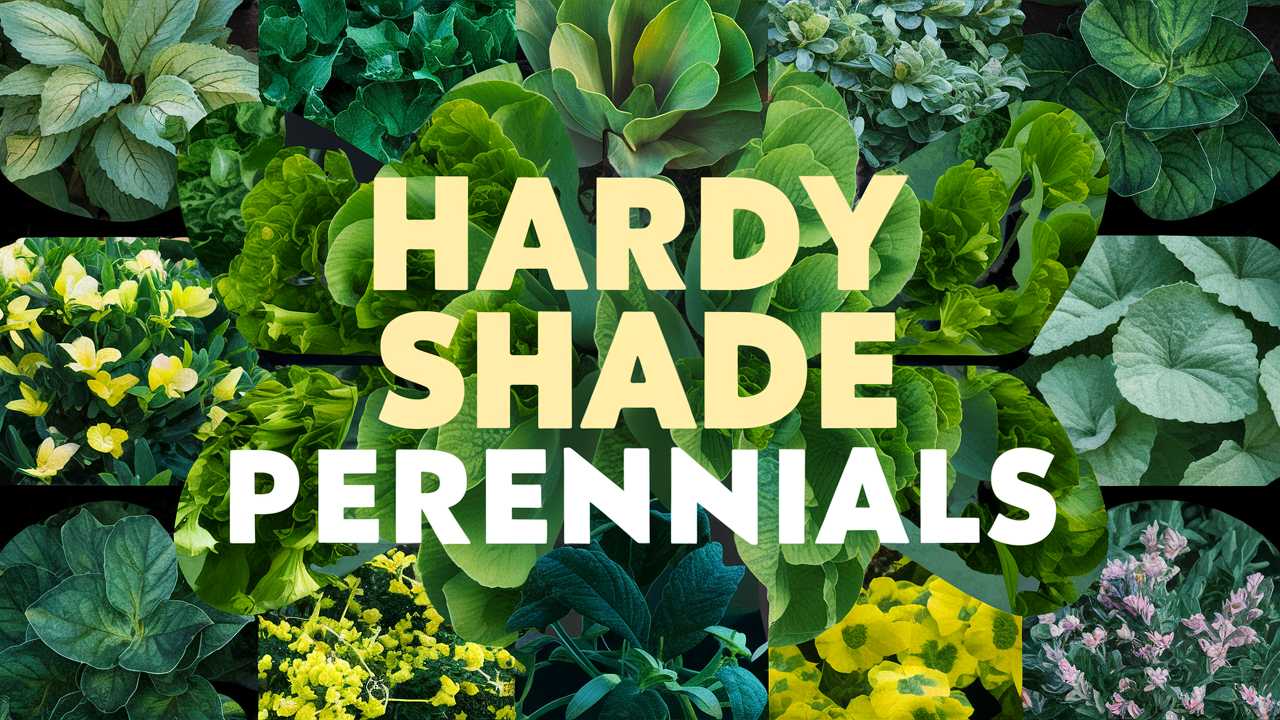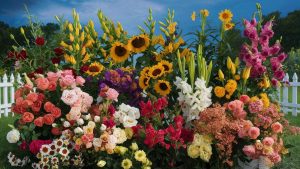In this guide, we’ll explore a diverse array of hardy shade perennials that can bring life and color to your garden, even in the shadiest spots.
Bigroot Geranium
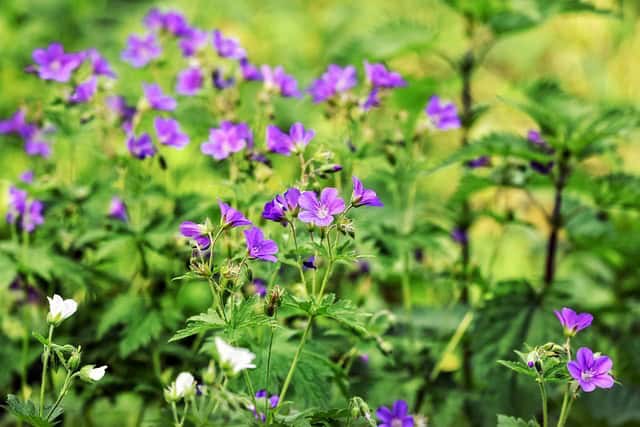
Bigroot geranium (Geranium macrorrhizum) is a robust perennial that thrives in partial to full shade. This plant features attractive, palm-shaped leaves that emerge with a reddish tint, transitioning to deep green as the season progresses. What’s particularly striking about bigroot geranium is its production of small, pink to violet flowers that bloom in late spring and early summer.
Aside from its stunning ornamental qualities, bigroot geranium is cherished for its spreading habit, making it an excellent ground cover option. Its dense foliage can help suppress weeds, creating a tidy appearance while enriching your garden’s ecosystem. Plus, it’s known for its resilience to drought once established, making it a low-maintenance choice for shaded areas.
Toad Lily
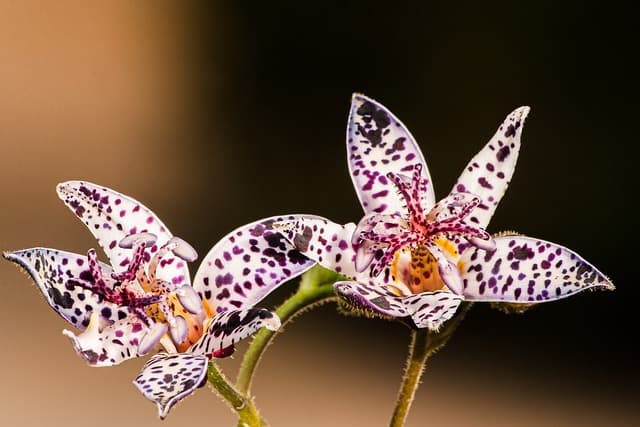
Toad lily (Tricyrtis hirta) is a unique and exotic choice for shaded settings. Its unusual, orchid-like flowers bloom in late summer to early fall, showcasing a captivating mix of purple, white, and yellow shades with striking spots. The intriguing design of each flower makes toad lily a conversation starter in any garden.
Beyond its visual appeal, this perennial is beloved for its tolerance of poor soil conditions and high humidity, making it versatile for various shaded environments. Toad lily’s interesting foliage remains attractive throughout the growing season, with dark green leaves that can sometimes develop purple speckling. For a whimsical touch in your garden, this plant is hard to beat.
Ajuga
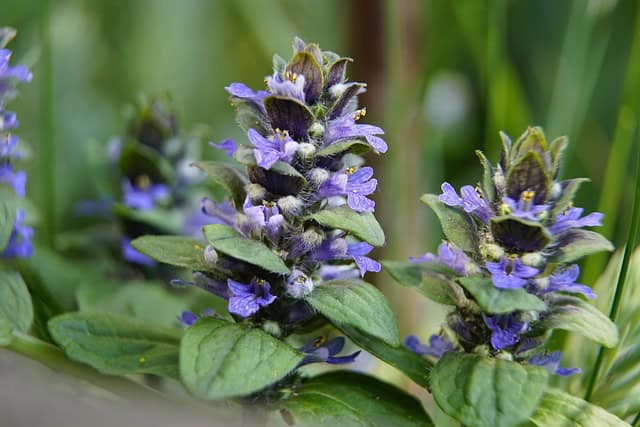
Ajuga, commonly known as bugleweed, is an excellent perennial ground cover known for its vibrant foliage and striking flower spikes that emerge in the spring. This plant showcases a variety of leaf colors, ranging from deep green to variegated varieties with hints of purple or bronze. The low-growing nature of ajuga makes it particularly effective for filling in bare spots or sloped areas where maintenance can be tricky.
In addition to its aesthetic qualities, ajuga is resilient and can handle various soil types, although it prefers moist conditions. Once established, it creates a dense mat that suppresses weeds, making your gardening efforts more fruitful. Its ability to thrive in both shade and sun gives you the flexibility to incorporate it in various areas of your landscape.
Hosta
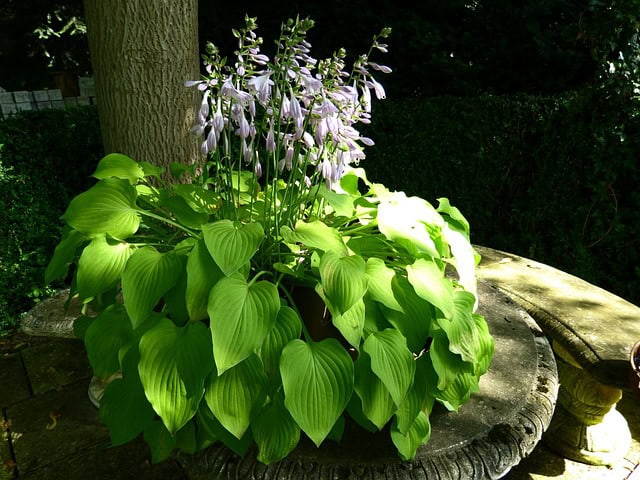
Ah, hosta! A classic in the world of shade perennials. Known for their lush, large leaves, hostas come in a multitude of varieties with different colors, sizes, and growth habits. While primarily valued for their foliage, many hostas also produce beautiful flower spikes that attract pollinators, adding even more interest to a shaded garden.
These hardy plants are exceptionally versatile, thriving in a range of soil types and moisture levels. With some varieties preferring more moist conditions while others can adapt to drier soils, hostas can fit various garden environments. When planting hostas, consider mixing different types to create an appealing tapestry that changes over the seasons, transforming your shade garden into a lush paradise.
Old-Fashioned Bleeding Heart
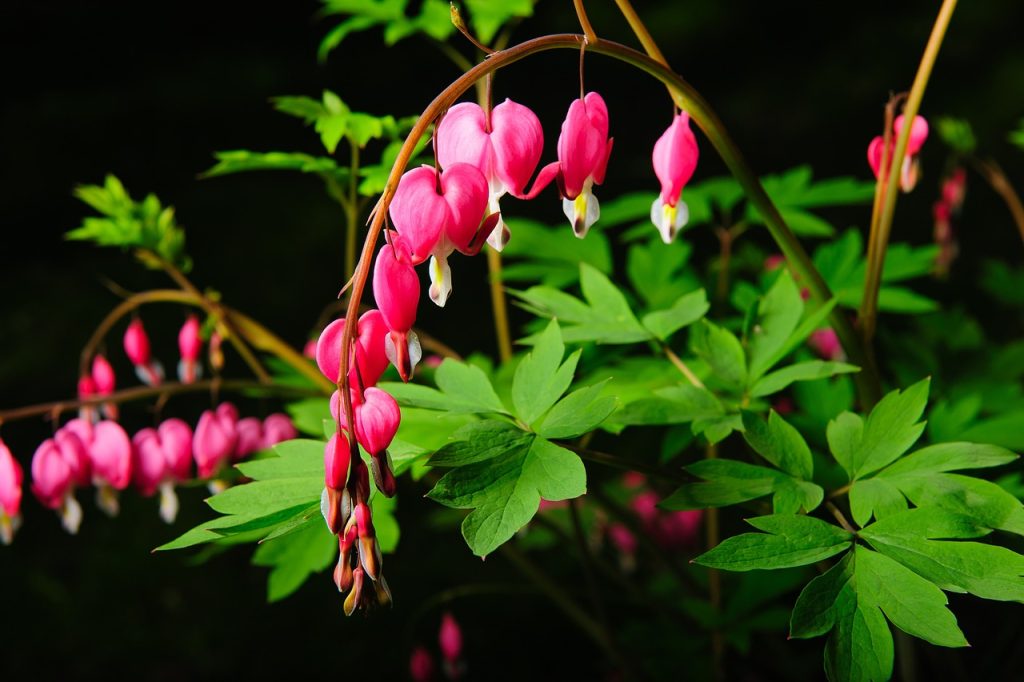
Old-fashioned bleeding heart (Dicentra spectabilis) is a nostalgic favorite for many gardeners. Known for its heart-shaped pink or white flowers that dangle from arching stems, this plant evokes a sense of romance and whimsy in the garden. It thrives in well-drained, rich soil and dappled to full shade.
What sets bleeding heart apart is its enchanting flower structure and charming foliage, which offers a delicate, fern-like appearance. As a spring bloomer, it brightens up shaded areas before many other plants begin to show their colors. Just keep in mind that once summer arrives, bleeding heart tends to go dormant, so plan your garden design accordingly by incorporating summer-blooming perennials alongside it.
Yellow Corydalis
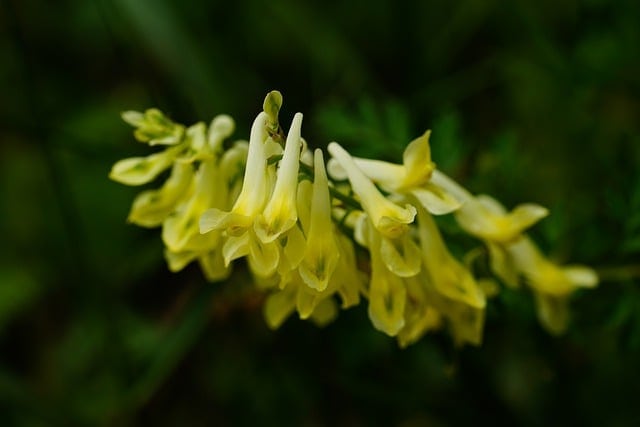
Yellow corydalis (Corydalis lutea) is a delightful little perennial that adds a splash of color to shady spots with its bright, yellow, tubular flowers that appear from spring through fall. This plant is not only beautiful but also charming with its finely textured, fern-like foliage that provides a lovely contrast to broader-leaved companions.
This perennial is incredibly versatile, adaptable to a variety of soil types, including alkaline soils, and is relatively drought-tolerant once established. Yellow corydalis can even spread and naturalize in ideal conditions, creating a cheerful display over time. Its ability to thrive in shaded or partially shaded environments makes it a preferred choice among gardeners looking to brighten up darker areas.
Lungwort

Lungwort (Pulmonaria spp.) is another fascinating perennial, known for its unique spotted foliage and early spring flowers that range from pink to blue. Derived its name from the historical belief that its leaf shape could treat lung ailments, this plant brings both beauty and a story to your garden.
With its ability to thrive in rich, moist, and shady conditions, lungwort is an excellent ground cover option that can also tolerate deer browsing. It’s a highly useful plant for filling in spaces beneath trees or in nooks where other plants may struggle. Moreover, lungwort is low in maintenance and can provide significant visual interest early in the growing season when many shade perennials are still emerging.
Deadnettle
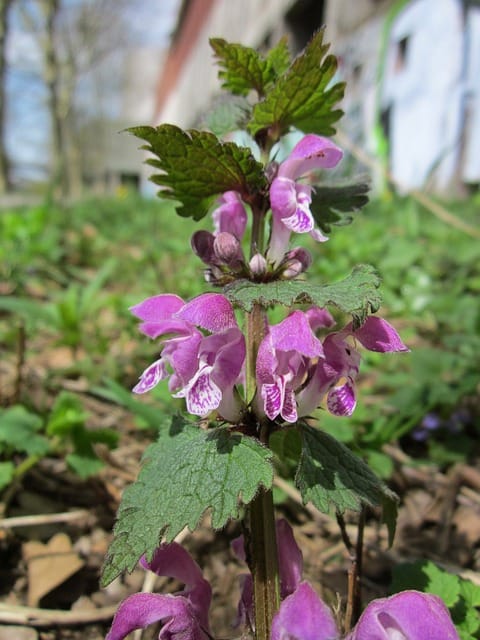
Deadnettle (Lamium maculatum) is a hardy perennial that boasts both ornamental and ecological benefits. With its lovely variegated foliage and charming, tubular flowers, it adds texture and visual interest to shaded areas. The flowers, which bloom from spring to early summer, can range from pink to white, attracting pollinators and other beneficial insects.
This plant is particularly effective as a ground cover, suppressing weeds while illuminating darker spaces with its vibrant foliage. Deadnettle is renowned for its adaptability, thriving in various soil types and moisture levels. It’s also resistant to deer and rabbits, making it an ideal solution for gardens where these critters might pose a challenge.
Barrenwort
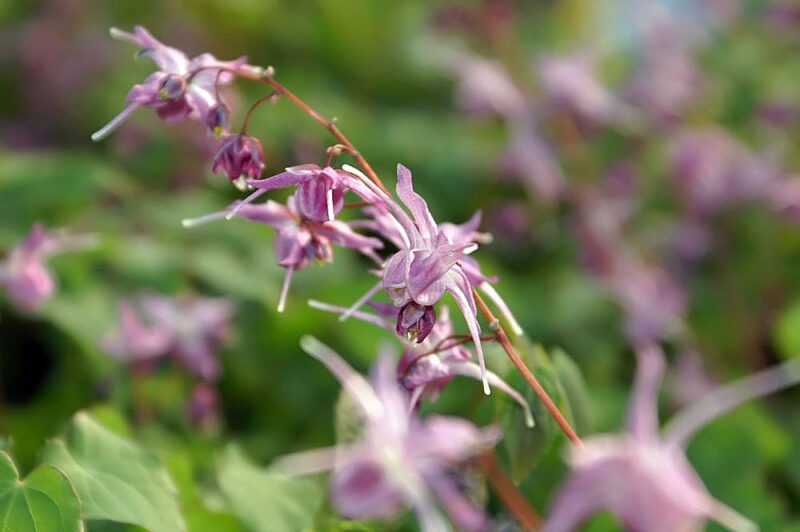
Barrenwort (Epimedium spp.) is a lesser-known but enchanting choice for shaded gardens. This perennial showcases delicate, heart-shaped leaves that hover above its wiry stems and produce delightful flowers in early spring. The flowers bloom in a variety of colors, typically in shades of yellow, white, or purple, often resembling tiny orchids.
Barrenwort is incredibly resilient, thriving even in lean soils and dappled light. It’s especially useful in woodland gardens, providing a lush carpet beneath trees. Importantly, its growth habit allows it to spread gradually, making it perfect for adding character to challenging spots in your landscape while remaining low-maintenance.
Brunnera
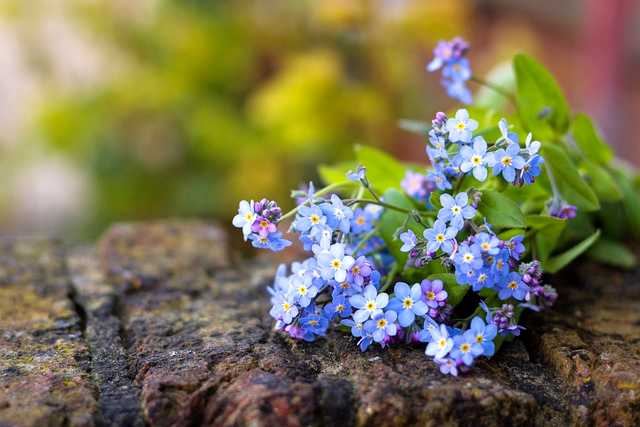
Brunnera, often known as false forget-me-not, captures the essence of charm in the garden. This perennial produces vivid blue flowers that resemble those of its namesake, forget-me-not, typically blooming in early spring. The real star of brunnera, however, lies in its attractive, large, heart-shaped leaves that often feature silver variegation.
Thriving in full to partial shade, brunnera is not only beautiful but also remarkably easy to grow, adapting well to a variety of soil types. It’s a fantastic choice for borders and naturalized areas, where its spreading nature can create gorgeous, flowing drifts of color. With its low-maintenance requirements, brunnera makes life easier for busy gardeners while still delivering dazzling aesthetics.
Hellebore
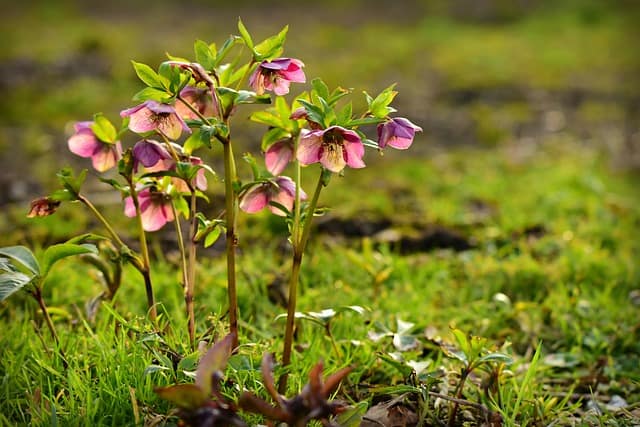
Hellebore, also known as Lenten rose, offers beauty and grace to shaded gardens. Blooming in late winter to early spring, it produces exquisite flowers that can be found in a diverse palette including whites, pinks, and deep purples. The stars of the show are their intricate shapes and colors that often remain charming even as they mature into seed.
These hardy perennials thrive in poor soils and can withstand periods of drought, making them an excellent and forgiving option for gardeners. Hellebores are also incredibly long-living, adding a lasting presence to your gardening endeavors. Their evergreen foliage can provide year-round interest and structure in shaded spaces, enriching your plant palette.
Astilbe

If you seek dramatic flair in your shade garden, astilbe is an exceptional choice. Known for its towering plumes of feathery flowers in shades of pink, red, white, and purple, astilbe blooms in mid to late summer, providing a vibrant contrast against lush green foliage.
Astilbe prefers moist, rich soils and thrives in partial to full shade, making it perfect for garden beds near trees or shady corners. Its upright growth habit adds architectural interest, and it pairs beautifully with other shade-loving perennials. The plant also attracts pollinators, supporting your garden’s ecosystem while enhancing its beauty.
Japanese Painted Fern
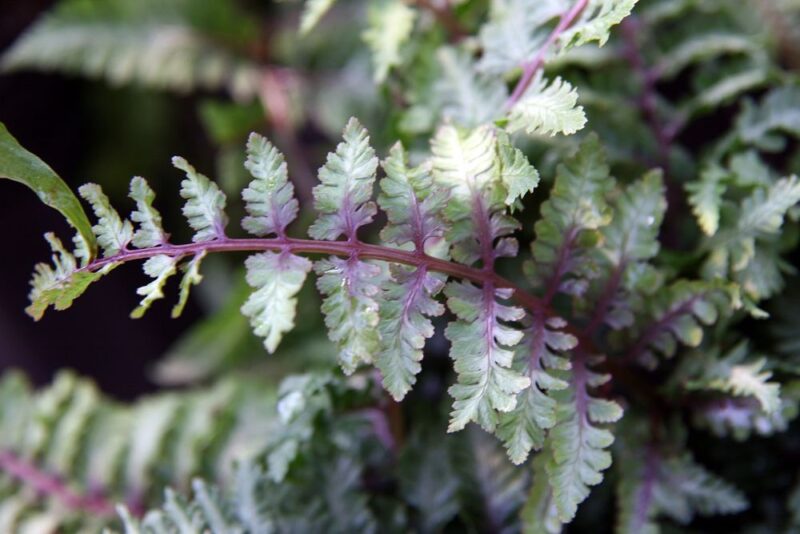
The Japanese painted fern (Athyrium niponicum) is an exquisite fern that’s perfect for shaded areas. Recognized for its silvery-blue fronds with hints of purple, this fern brings a stunning visual texture to the landscape. Its graceful arching leaves add an elegant touch to any garden corner.
This fern is not only beautiful; it’s also quite hardy, tolerating various soil types as long as they remain damp. Japanese painted fern can thrive in both extensive shade and light dappled sunlight, making it extremely versatile. Incorporating this fern into your garden will offer a serene focal point that blends beautifully with other shade-loving plants.
Wild Ginger
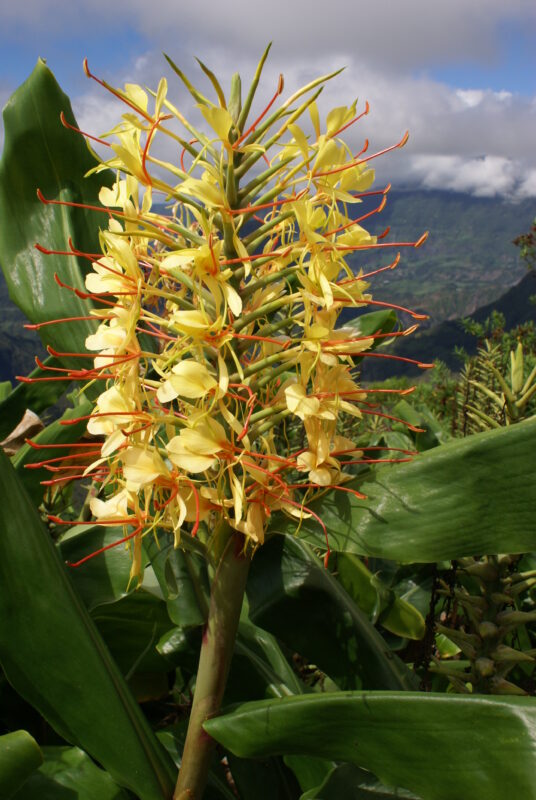
Wild ginger (Asarum canadense) is a native perennial that lends an earthy and unique quality to shady settings. Its distinctively heart-shaped leaves create a lush carpet across the forest floor and are often accompanied by small, intriguing, cup-like brown flowers that bloom close to the ground.
This perennial is particularly effective for creating ground cover under trees, as it thrives in moist, rich soils and tolerates various light conditions. Wild ginger is also valued for its ecological benefits, offering food and shelter for numerous wildlife species. By planting wild ginger, you can contribute to preserving local ecosystems while beautifying your shaded garden.
Japanese Forestgrass
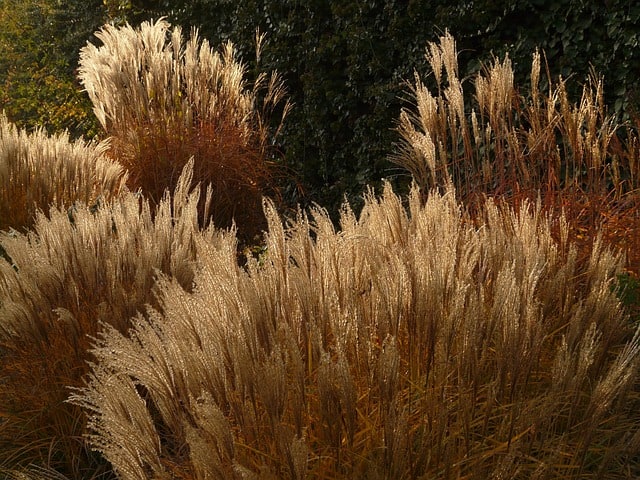
Japanese forestgrass (Hakonechloa macra) is a graceful ornamental grass that adds movement and texture to shaded areas. With its cascading, arching leaves that create a soft, flowing appearance, this plant can be the perfect addition to borders, containers, or mixed beds.
Appreciated for its ability to thrive in partial to full shade, Japanese forestgrass prefers well-drained, moisture-retentive soils. Its eye-catching golden-yellow foliage provides a stunning contrast when paired with darker plants and blooms. As this grass forms a dense clump, it also excels at suppressing weeds and provides a relaxed ambiance to your garden.
Lilyturf
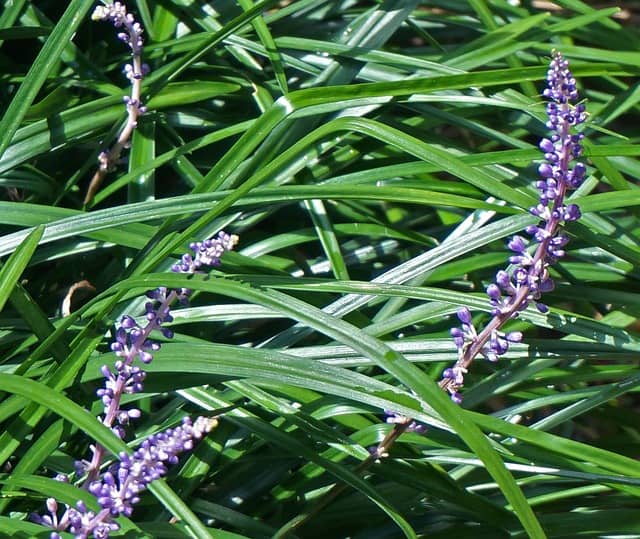
Lilyturf (Liriope muscari) is an excellent choice for adding texture and greenery to shaded spaces. Resembling a grass-like plant, lilyturf produces spikes of purple flowers in late summer, which emerge from attractive clumps of arching leaves. Its neat habit makes it ideal for edging pathways or filling in garden beds.
This hardy perennial is known for its adaptability, thriving in both shade and sun while tolerating a range of soil conditions. Once established, lilyturf is low-maintenance and drought-resistant, making it a practical choice for busy gardeners. With its ability to create a lush, colorful display, lilyturf can make even the shadiest corners of your garden shine.
Fern-Leaf Bleeding Heart
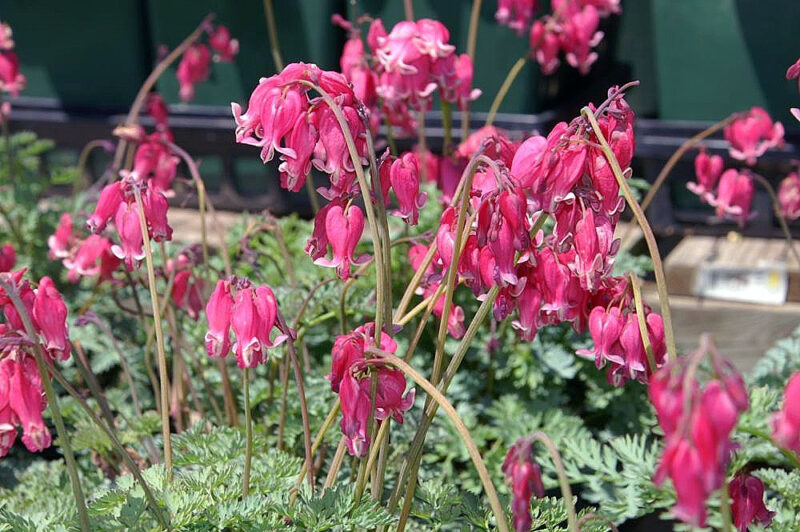
Fern-leaf bleeding heart (Dicentra eximia) is a charming perennial known for its fine, fern-like foliage and unique heart-shaped flowers. Blooming from late spring to early summer, its pink, peach, or white flowers create a whimsical touch in shade gardens.
This perennial excels in well-drained soils and can tolerate dry conditions once established, making it a resilient choice for gardeners. The delicate yet vibrant nature of fern-leaf bleeding heart pairs well with various other shade-loving plants, creating a lovely, multilayered effect in your garden. Its visual appeal and reliability make it a must-have for any shaded landscape.
Virginia Bluebells
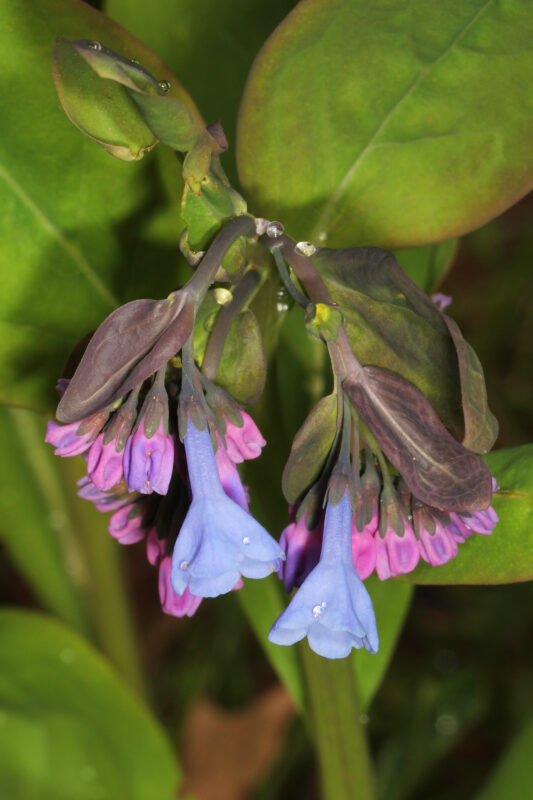
Virginia bluebells (Mertensia virginica) are a springtime favorite, providing a delightful burst of blue in shaded areas. These native perennials bloom in clusters of bell-shaped flowers that attract bees and other pollinators, offering both beauty and ecological benefits.
Thriving in moist, rich soils, Virginia bluebells prefer dappled sunlight and will often go dormant during the summer. Their lovely foliage provides emerald green views before the flowers appear, making them an essential addition to woodland gardens. Planting these bluebells not only enhances your garden’s palette but also supports local wildlife.
Columbine
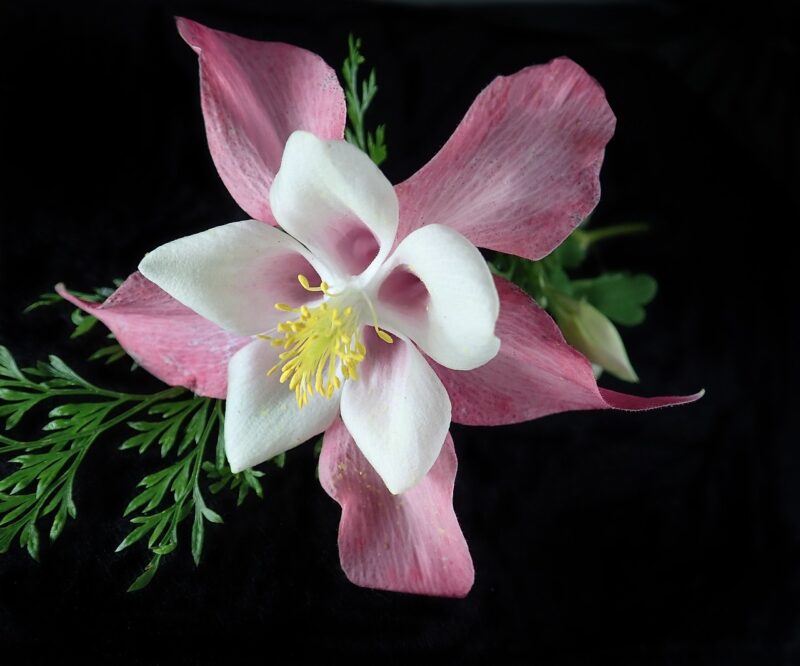
Columbine (Aquilegia spp.) is a perennial that thrives in partial shade, and it brings unique, intricate blooms that often resemble delicate chandeliers. With a variety of colors and shapes, columbine flowers can add a playful touch to any shady garden.
This plant is also known for its adaptability, thriving in various soil types. Once established, it’s relatively drought-tolerant and self-seeding, making it an effortless addition to your garden. The enchantingly shaped flowers of columbines are particularly attractive to hummingbirds, creating a lively atmosphere in your shaded spaces.
Cinnamon Fern
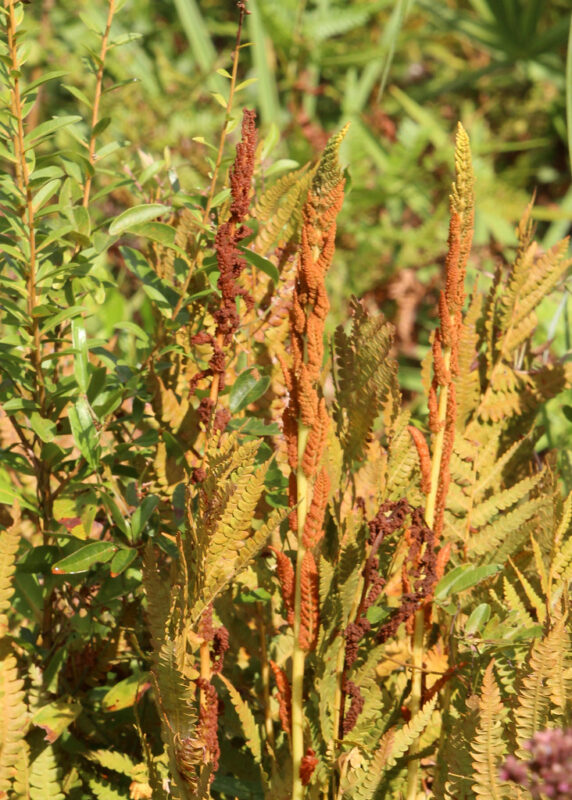
Cinnamon fern (Osmundastrum cinnamomeum) is an elegant native fern that provides a lush and vibrant presence in shady parts of your garden. Named for its unique, cinnamon-colored fertile fronds that emerge in spring, this fern adds dynamic texture and beauty.
Thriving in wet, loamy soils, cinnamon fern flourishes in full shade to partial sunlight, making it an excellent choice for woodland settings. As a backdrop or companion to other shade perennials, it creates a lush, woodland tapestry. It is also incredibly hardy, requiring minimal maintenance, allowing you to enjoy its beauty without stress.
Foamflower
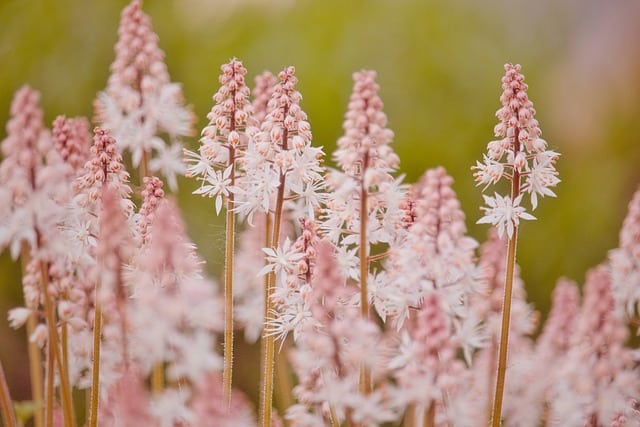
Foamflower (Tiarella cordifolia) is a delightful perennial that deserves a spot in your shady oasis. Known for its airy flower spikes that bloom in spring, foamflower produces a lovely froth of tiny white to pink flowers, creating an ethereal quality in your garden.
This shade-loving plant thrives in rich, moist soils and prefers partial to full shade, making it ideal for those challenging spots. Its heart-shaped leaves offer additional charm, often showcasing attractive marbling or variegation. As a low-maintenance ground cover, foamflower effectively suppresses weeds while adorning your shaded areas with delicate beauty.
Golden Star

Golden star (Chrysogonum virginianum) is a charming perennial that thrives in shade with its star-shaped, golden-yellow flowers that blossom in spring. This low-growing plant is excellent for filling in spaces where other plants may struggle, providing a bright pop of color in shaded corners.
Golden star enjoys moist, well-drained soils and tends to spread gradually, making it a great ground cover option. Aside from its beauty, it attracts pollinators and offers ecological benefits to your garden. Its cheerful blooms in early spring herald the approach of brighter seasons and add an uplifting touch to your shaded landscape.
Woodland Phlox
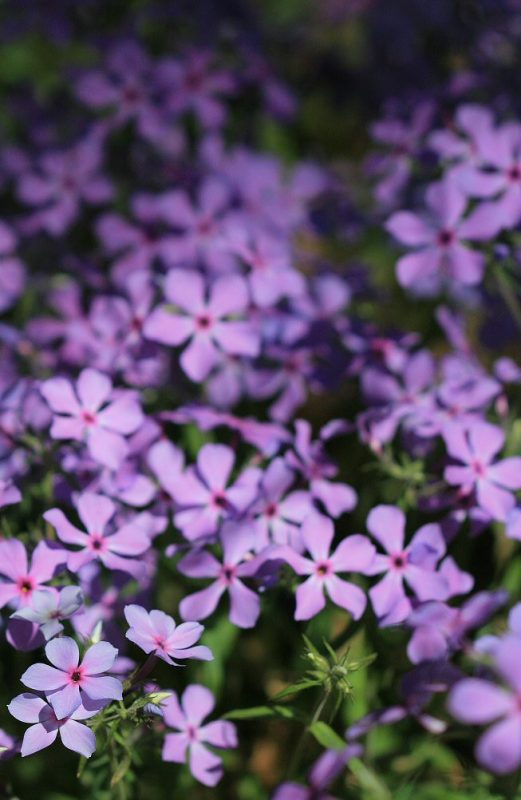
Woodland phlox (Phlox divaricata) is a beloved perennial that delights garden enthusiasts with its fragrant, star-like flowers in shades of blue, purple, or white. Blooming in spring, this plant attracts butterflies and beneficial insects, making it a functional addition to your shade garden.
Preferring well-drained, moist soils, woodland phlox thrives in dappled sunlight to partial shade. Its growth habit allows it to blend well with other shade-tolerant plants, creating a harmonious and dynamic garden scene. Surrounding your woodland phlox with contrasting foliage will highlight its beauty and enhance your shaded sanctuary.
Solomon’s Seal
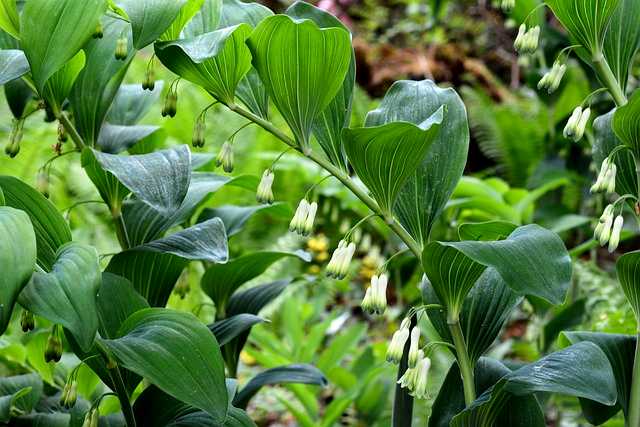
Solomon’s seal (Polygonatum spp.) is a classic woodland perennial that’s treasured for its graceful, arching stems adorned with pairs of tubular, dangling flowers. Blooming in late spring, the flowers often give way to blue berries in the fall, adding visual interest for months.
This perennial thrives in rich, moist, well-drained soils and can withstand full shade, making it a versatile choice for many shaded gardens. The elegant foliage—shaped like a tear drop—forms a lush backdrop, ideal for both subtle pairings and striking contrasts with other plants. Solomon’s seal is not only beautiful; its hardy nature ensures it will grace your garden for years to come.


